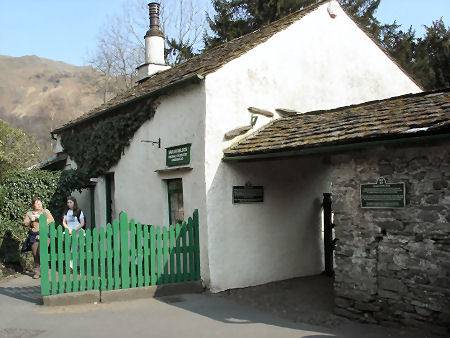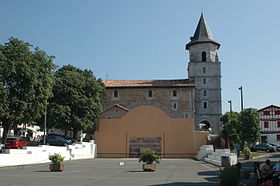This last week @EWoodruffe and I have been busy training groups of
staff at individual school CPD sessions. We worked in one school
where the children in Year 4 to Year 6 are moving on in their language learning
and the staff were keen to find ways to support their growing inquisitiveness
about the grammar of the French language.
As part of the CPD we looked at nouns and how to practise knowledge
,recognition and application of definite and indefinite articles. Here are the
games, step by step. You will be able to revisit these games over and over again
as the children learn more language and hopefully this will increase the
children’s growing confidence in how to use articles before nouns.
All you need for the
games in French are six coloured paper squares to represent le ,la ,un,une, les
and des. (If you apply these games to
other languages then you will need n amount of different coloured cards to
represent the amount of definite and indefinite articles you are practising in
that specific target language)
You can reduce the number of coloured cards and still play the games if
you r focus is just on definitie and indefinite singular articles or definite and
indefinite plural articles.
Each child will need
their own sets of these coloured squares too.
We are making the assumption here that the children already
know a series of nouns within a context such as animals. The children also
already are aware that in French there are two singular definite articles and a
plural definite article and they have had exposure to the indefinite articles too . You can play the games below and go through the steps just to practise definite articles in the singular and plural or to practise the change between definite and indefinite singular articles . It's a mix and match opportunity to practise a grammatical structure :the use of definite articles "the " and indefinite articles "a/some " with nouns in the target language.
Step One
Discuss clearly with the class the noun magic trick the class have become aware of- whether this is different words for" THE"/ how to change "THE to A" in the target language or plural words for "THE and SOME" we have become aware of ….
Reveal an empty table on the flip chart.This table below has four rows and three columns…. because we are looking at the big picture and assuming that the children are ready to practise changing between singular and plural definite and indefinite articles .But why are there four rows?
Well all will be
revealed!
First we ask the class to go on a noun class hunt .In this instance we are looking for animal nouns and for three specific animal picture
cards concealed on the room . You can pretend to be explorers with language hunting binoculars and look
carefully around the classroom for cards that have been concealed e.g.
“Cherchez le serpent/la souris/les poissons”
Place the animal pictures in the second row of the table
and then remove and replace the cards when you have collected them all with the correct definite article when
the class are confident to tell the teacher the noun with the correct definite article.
Remember we were playing these games as part of staff CPD and the great thing is to have Emilie our native speaker teacher supporting too. The teachers loved hearing how Emilie is
teaching her own little boy to speak French and always says the noun with the
definite article in French when they meet new nouns together.This came about from a question by a teacher about “Well how
do children in France learn if it’s le or la?” Thanks Emilie – it’s great to
have native hands on knowledge like
that! We thought you may also like to know this and share with your children too.
So in the second row write the definite articles in
French after removing the pictures of nouns (le serpent/la souris/les poissons)
In the fourth row place the indefinite articles after discussing how you are now looking “a snake/a mouse/some horses”.
Go on your animal hunt using our imaginary binoculars…talk about
how this time you aren't specifically
looking for a specific snake etc.
As we are no longer looking for a very speicifc snake etc one of the teachers on CPD suggested that we should therefore have more
than one picture card of “le serpent” etc so that children could make a random choice not
an exact definite choice. Good idea!
Once again place your pictures on the chart,but this
time in the third row.
Remove the pictures and replace the pictures
with the correct written indefinite articles
So why have we got additional rows?
Well now we need to add our magic trick colour coded
guide! Take a look!
The colour blocks represent the article below them, green is
le , blue is la etc …..
Step Two
Practice your magic trick by checking that if “the
teacher” holds up a coloured piece of card the children can respond by calling out the
correct definite or indefinite article
Step Three
Look at a list of known nouns (e.g here our focus has been animals in French) with definite
articles, written as a list for the children.
Call a colour and the children have to select a noun that
they can use to say the correct definite/indefinite article with that noun
e.g. If “blue “ is called in the target language , then the
response from children must be a feminine noun ( noun preceded by “la”) but if brown
is called in the target language then the children’s response must be a noun in
the plural with the indefinite plural
article “ a plural noun of the animal preceded by “des”
Step Four
Make this a pair game
Call a colour pair game. Simply ask the children to practise as a game "step three" but this time in pairs.
Step Five
Show a colour, say a colour and can a child give you a full
sentence with a correct article and noun?
Step Six
Make this a pair or group game
Simply play step five as a pair or group game .
Step Seven
Ask the children to order their coloured paper squares in
any order they wish and to challenge a partner to say animals with the correct
definite/ indefinite article in the order that has been arranged with the
coloured squares for them by their partner.
Step Eight
Ask the children to play last article standing.
They just
select a coloured square and stand up holding the square clearly in front of
them. The teacher selects one of his/her coloured cards from a bag and says a
noun which has a corresponding definite or indefinite article before it .
If the
children are holding the coloured square that corresponds to the definite
/indefinite article that the teacher has used,they must sit down. Who will be
the last children standing?
Step Nine
Play the game above as a table game.
Make this a pair or group game
Teachers at the CPD session felt that over time they could confidently grow n their own competent use of definite and indefinite articles by playing and practising the games and steps with their classes- not necessarily all the steps at one time or all the definite and indefinite articles singular and plural at one time.
We felt that over and over again we can come back to these
simple games and play some or all of them to reinforce children and teacher
knowledge of definite and indefinite articles with nouns.
Hope you find these steps and simple games useful too!























